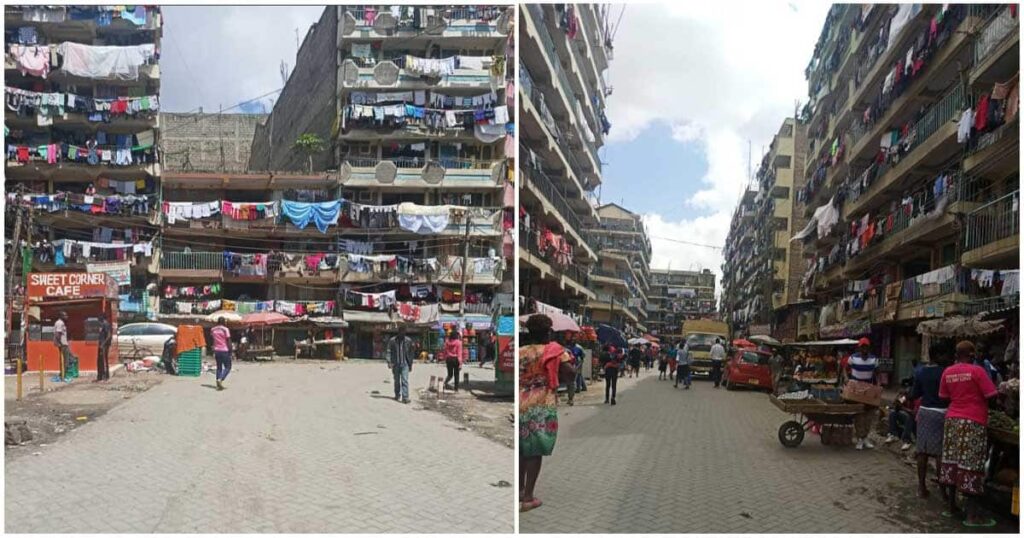Gated communities and residents associations have been instrumental in protecting the property value and aesthetic appeal of their neighborhoods.

For a very long time, neighborhoods like Pipeline estate have been synonymous with tall dark buildings characterized by indoor dampness, poor lighting, lack of parking, and lack of space for children to play. This situation is quickly replicating in middle income neighborhoods such as South B, South C, Kilimani and Kileleshwa.[1]
The script is always the same with the estates starting out as well-organized neighborhoods, where everything from the housing units to the recreational spots are well laid out.
With time, they start experiencing gradual decay when the construction and development standards of the areas are not adhered to.
Developers driven by their need to maximize profits end up disregarding existing zoning by-laws, plot ratios, ground coverage and environmental issues. They also fail to observe the capacity of the available infrastructure services.
The resultant is chaos: loss of aesthetics, health and safety risks, as well as reduced livability of cities. You start having new buildings which lack adequate lighting and require artificial lighting even during the day, damp and cold corridors. No playing ground for children and inadequate parking spaces.
Since developers are purely driven by profits, it is the role of the government through planning authorities, to maintain some balance between public interest and private interest.
The construction approval process in Kenya is vested on the Physical Planning departments within the County Government management. The Physical Planners employed by County Governments are the ones mandated to make the architectural plan approval or disapproval.
Despite the robust regulations in place, enforcement is nearly non-existent. In addition, rogue developers in cahoots with corrupt county officials are always circumventing the system and obtaining approvals for illegal developments.
This is the main reason behind the downward trend of many localities. The failure in city planning has led to Kenyans turning to gated communities and residential associations as a last resort to stem uncontrolled and unplanned developments.
The Rise Of Gated Communities.
A gated community is a residential neighborhood or housing estate that strictly controls its entrances. It provides a closed perimeter of fences or walls to enhance the security of this space.
The purpose of the gates between the walls or fences is to provide the perception of exclusivity and security more than it is to prevent or deter crime.
The trend is particularly common in the up-market niche of private housing development.
This approach to residential living is on high demand among by tenants and homeowners since it promotes higher home values and a better living standard.
The residents of the community share certain social amenities and facilities such as electric fence, street lights, roads, sewer systems, swimming pools and the gym among others.
These services are paid for in the form of a service charge that is then distributed to individual residents and in the process lessening the cost burden.
In this way, the gated communities are able to maintain better living standards in their estates, which is not offered by the authorities.
The gated communities are normally managed by their respective residents associations, though a residents association can be formed by independent home owners who are not necessarily in a gated community.
The Role of Residents Associations in Physical Planning
Over the years, Kenya has seen a rapid growth of Resident Associations as more and more citizens embrace the need to take charge of their neighborhoods.[2]
The concept of Resident Associations started gaining ground in the 90’s when majority Kenyans were frustrated by the poor services from the government and felt that they needed to develop structured ways of advocating for better services.
Resident associations are groups that are formed by residents of an area for purposes of communing together and protecting interests of the neighborhoods they represent.
The last ten years has seen rapid growth of Resident Associations as citizens are increasingly becoming aware of their rights, roles and responsibilities and making demands for better services from the government.
Currently there are over 3,000 registered Resident Associations spread across Kenya with a larger concentration of the Associations in the urban areas.
The Associations have been instrumental in advocating for better services and demanding compliance to the rule of law. Residents are no longer willing to sit back and lament about poor services or wait for the government to avail services. Through the Associations, residents have taken charge of their neighborhoods and are actively involved in ensuring that they can access services such as garbage collection, security, water supply, protection of open spaces within the neighborhood among others.
The Associations have also been instrumental in protecting the property value and aesthetic appeal of their neighborhood by demanding that any new development taking place within the neighborhood must conform to the planning and zoning laws governing the area. For example, recently, Karen Ngong View Estate Association went to court to stop construction of Karen Village Culture and Heritage Centre on the grounds that it didn’t adhere to the relevant laws and the development will be a danger to their right to a clean, healthy as well as safe environment that is free from noise, stress and air pollution. Similar moves have been made by several other Associations across the country.
The place of Resident Associations in the achievement of sustainable cities and communities cannot therefore be overemphasized.
Sources:








